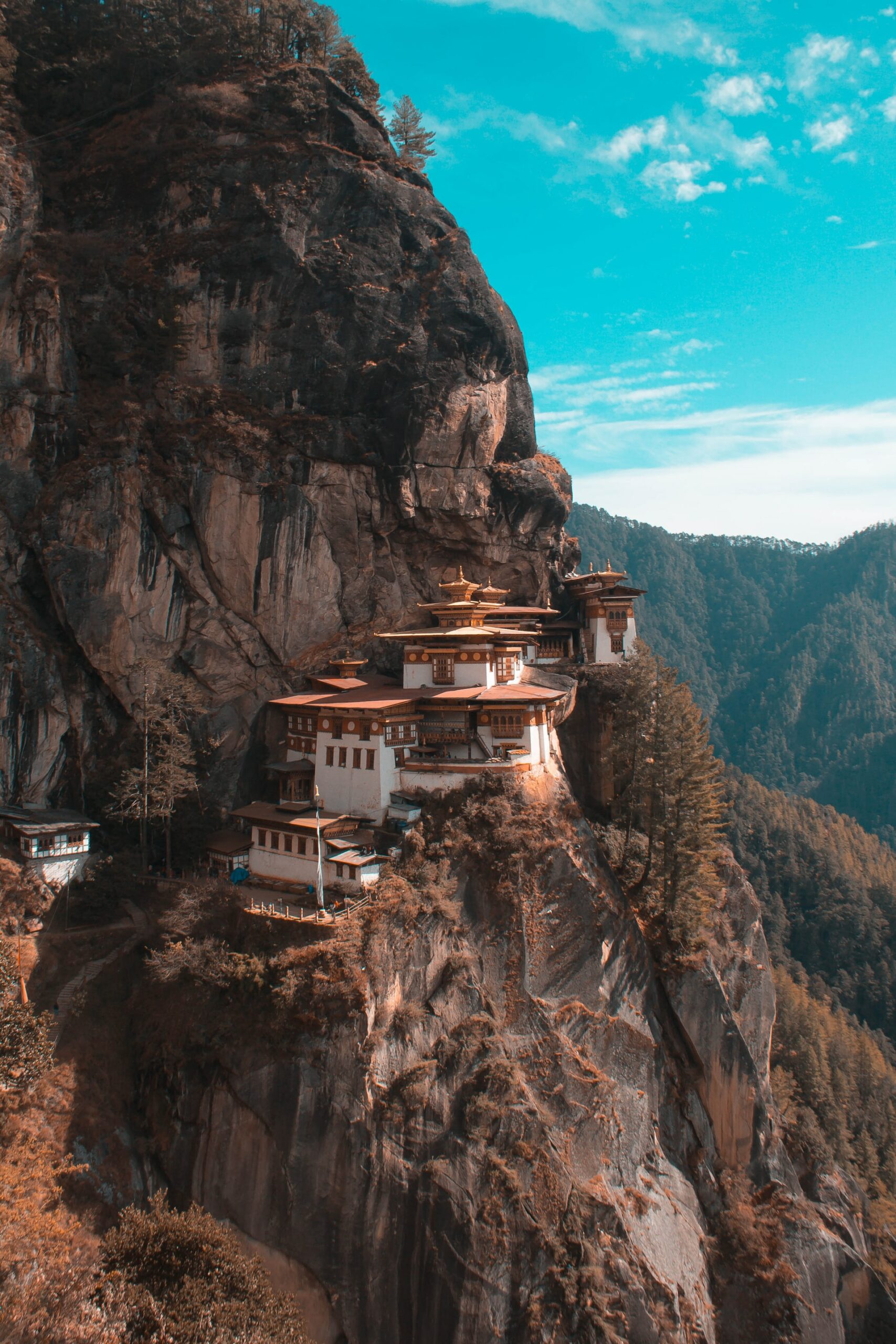The fog-shrouded Buddhist monastery of Paro Taktsang (Paro Taktsang, Taktsang-dzong, meaning “den of the tiger”) in Bhutan is one of the largest religious centers in the country. It overhangs an abyss on a rock 3,120 meters high, towering seven hundred meters above the Paro Valley. Founded in 1692, the temple complex was built next to caves that had sheltered monks for several hundred years. In 1998, Taktsang Lakkhang burned down almost completely – and was restored to its original form seven years later.
Today, the Taktsang Lakhang Monastery is an important tourist attraction in Bhutan. The balconies on the religious monuments offer picturesque landscapes of the western part of the country, and the halls with sculptures and statues of Buddha hollowed out right in the rock. It can be reached by mountain trails that were equipped just over a hundred years ago. The path to the monastery leads along paths lined with prayer flags that symbolize protection from evil forces, positive energy, vitality and good luck.
The Taktsang Lakkhang Monastery is located on a rock 3,120 meters high. The nearest large town, Paro, is 10 kilometers southeast of the Buddhist temple and can be reached by an unpaved road. A cab from Paro to the beginning of the tourist route to the monastery and back with a wait of about five to six hours will cost an average of 600 BTN (~$6.0); from Thimphu, located 60 kilometers (on the highway) east of the temple – 1500 BTN (~$15.0). There are several ascents to Taktsang-lakhang: from the northwest, the route to the rock monastery goes through a pine forest, dotted with colorful prayer flags, and from the south and north – through a rocky plateau with the magical name of “One hundred thousand fairies”, or Bumta (Bhumida).
The route is divided into three sectors, between which there are three small cafes where you can eat, rest and drink tea with milk or coffee. The route can be done on foot or on a mule. Travel time depends on one’s fitness, and it takes an average of two to three hours to ascend the trail to the temple; it takes about the same amount to descend. Traveling on a mule, which will cost an average of $10 per person per day, takes half as much time, even with a short rest stop (the animals need a little rest). In rainy and wet weather, because of the danger of falling on steep slopes and rocky areas, traveling on horseback is not recommended.

Average Rating